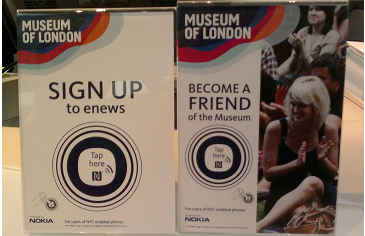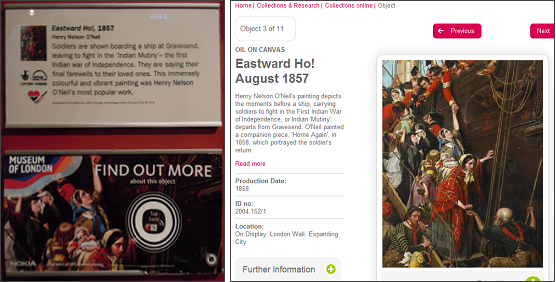Tourist Attraction Needs to Think Carefully about NFC-Enabled Signs
Last weekend I visited the Museum of London. I had heard that Nokia’s NFC Hub initiative had recently set up an interactive service that used signs enabled with near field communication (NFC). Visitors with an NFC-equipped mobile phone would be able to place the device on any NFC tag in the museum and learn more about the objects on display. It’s an interesting way to encourage visitors to become more involved with the exhibits. It’s being touted as the first time that NFC has been used in a museum.
Nokia’s leads other phone-makers in this field (see our Hotline on this subject). Its NFC Hub initiative and its work to develop NFC-based content sharing and Bluetooth pairing are pioneering examples of how the technology can be used. Here at CCS Insight, we’ve bought tag stickers from NFC Hub that provide Web links to our analysts’ Twitter pages. These stickers work well, so I was intrigued to see how NFC Hub could improve a trip to the Museum of London.

Once I got the chance to go around myself, I did find NFC tags positioned beside several displays. I tapped several of these tags with my Nokia C7 (recently upgraded to Symbian Anna) and Samsung Tocco Lite Quick Tap. Both devices worked, but to my disappointment, every tap simply provided me with a link to the Web page of that artefact on the Museum of London’s site. A couple of examples are shown below.
The information on the Web site wasn’t vastly different from that displayed in the exhibition. I got the sense that the tags weren’t giving me anything more than what I could already read in the text printed beside every object. That’s a shame, as I think NFC Hub and the museum could enhance the experience.
Perhaps the museum could develop a specific mobile application that provides a record of the entire artefact collection, in much the same way as visitors can access this on public computers available at the museum. It might also initiate a forum where visitors leave comments below online pictures of objects. In the future, this forum could grow to encompass other museums around London.
Should NFC Hub and the Museum of London continue to explore online interaction, they need to be careful. Adding Web links to NFC tags assumes that visitors have data plans to access the Internet, and that they’re happy to use some of their allowance to download information. I’m sure some visitors will be annoyed that they effectively have to pay to retrieve tagged information. Perhaps the museum could promote free Wi-Fi connectivity to overcome this.
I’d have preferred NFC tags to give immediate short texts rather than Web links. Texts wouldn’t necessarily have to contain a lot of information; perhaps just a couple of interesting facts about the display. Or maybe a question on one tag, with the answer provided on another tag. This would at least provide a different form of interaction for visitors. It wouldn’t cost a great deal to deploy, and would be great for kids.
NFC use in a mobile interactive environment is very new, and those involved are still working out how to get the best out of it. Adding tags isn’t expected to completely change the museum experience. In fact the Museum of London has already said that it doesn’t expect its tags to be used heavily. I can definitely confirm this — I was the only person using them when I was there. But the tags are an important step in the development of NFC for mobile devices, and a good testing ground for Nokia’s NFC Hub.
I commend Nokia for funding this initiative. The majority of NFC work has centred on mobile payments. But we believe NFC adoption will initially be driven by these simpler forms of information exchange (see this Hotline for more details). And museums — which thrive on providing information — provide a perfect opportunity to exercise this idea.


 Twitter
Twitter
 Facebook
Facebook
 LinkedIn
LinkedIn
 Email
Email